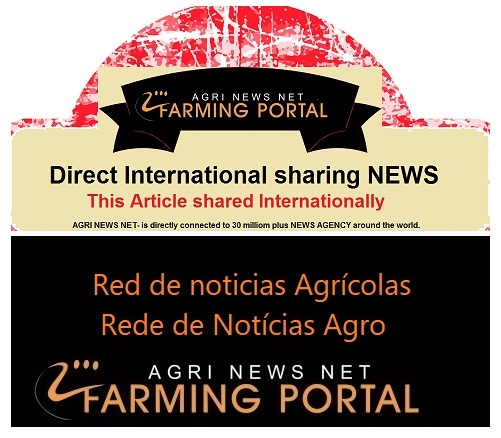World Farming Agriculture Commodity news - Weekly Updated - Exclusive and very popular -
The price index, compiled by the U.N. Food and Agriculture Organization to track the most globally traded food commodities, slipped to 120.7 points in August from a revised 121 in July.
The FAO index hit a three-year low in February this year as food prices retreated from a record peak set in March 2022 following Russia's invasion of Ukraine.The August value was 1.1% lower than its level a year ago and 24.7% below its peak from March 2022.In a separate report, the FAO lowered its forecast for global cereal production in 2024 by 2.8 million metric tons to 2.851 billion tons, putting it almost on a par with the previous year's output.The decrease largely reflects reduced prospects for coarse grain crops in the European Union, Mexico and Ukraine, thanks to hot and dry weather conditions.The forecast for world cereal utilisation in 2024/25 was lowered by 4.7 million tons versus July to 2.852 billion tons, reflecting a 0.2% increase from 2023/24.
The agency also cut its forecast for world cereal stocks at the close of seasons in 2025 by 4.5 million tons to 890 million.
Like other crops, including cereals, grapes have suffered from heavy rainfall in France over the past year. These helped the spread of diseases among vineyards, the ministry said. In addition, many of them experienced so-called coulure, a fall in flowers and young berries due to humid and cool conditions during flowering. The revised forecast was 11% below the five-year average of 44.2 million hectolitres. A hectolitre is the equivalent of 100 litres, or 133 standard wine bottles. Wine, along with spirits, is one of France's biggest export earners. The sector is facing declining domestic consumption, which has hit some production areas such as Bordeaux, contributing to recent protests by farmers. Winemakers in the Bordeaux region agreed on a plan to uproot 8,000 hectares (19,768 acres) of vines this year to meet the drop in output. This, combined with losses due to coulure, mildew and hailstorms are set to lead to a 10% reduction in output after a drop in 2023.

There are a number of key trends driving changes in animal protein consumption in Europe. Constrained availability will have the biggest impact on animal protein consumption going forward, as it will require consumers to adjust their choices. Overall animal protein production in Europe is expected to decline in the coming years. Policies and standards around environmental and social issues are intensifying and exacerbate the pressure on animal protein supply chains, which are already challenged by a structural lack of profitability. A sustained loss of competitiveness in export markets will challenge pork production, while beef production will continue its structural decline. Also, increasing animal welfare standards will limit the long-term growth of poultry production. Consumer preferences are also evolving, creating change in what, where, and how much people are consuming. The growth in convenience products, premiumization, and the changing preferences of younger generations will lead to reduced animal protein consumption. Animal protein companies need to continuously adapt to these subtle but ongoing changes if they want to remain successful. Three areas warrant specific attention in our view. First, animal protein companies can benefit from diversifying their markets, sales channels, and products. Second, they also need to have strategies in place to meet sustainability and animal welfare standards in their supply chains. And third, they need to make their claims around sustainability and animal welfare visible to consumers to help realize a return on investments.
Australian Farming
















